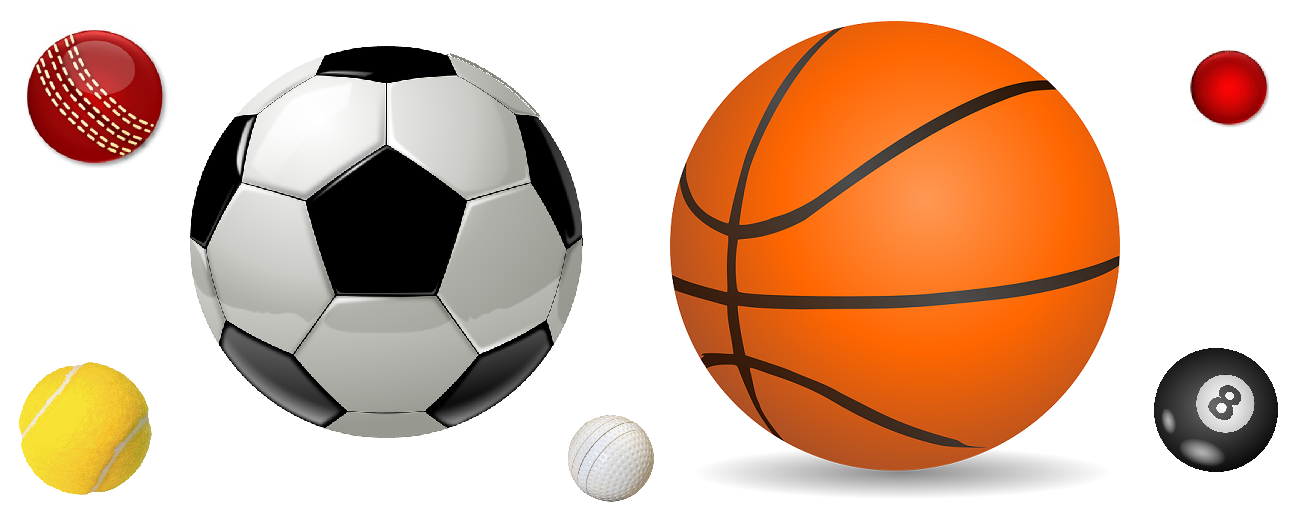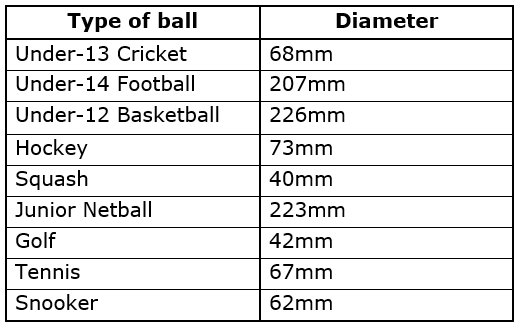Or search by topic
Number and algebra
Geometry and measure
Probability and statistics
Working mathematically
Advanced mathematics
For younger learners
Sports Equipment



- Problem
- Getting Started
- Student Solutions
- Teachers' Resources
Sports Equipment
I've collected together these different balls that are used in various sports:

Here are the standard diameters of the different types of ball:

Here is a scale drawing of the balls:

Why do this problem?
This activity offers the opportunity for pupils to think in creative ways as they explore the relationships between differently-sized balls. Through the physical manipulation of the circles, which represent the balls, learners will come to a better understanding of circle properties.
Possible approach
Introducing this task using the school's own stock of sports equipment is likely to grab children's attention. Show the class all the different balls you have gathered together and invite them to talk about what they notice. They are likely to suggest all sorts of things, perhaps related to the sport that each is used for, or the material each is made of, in addition to their spherical shape (or approximate spherical shape).
Key questions
What have you decided to do?
Possible extension
Pupils who easily manage the activity could be further challenged by asking them to place the equipment in lines that make up an equilateral triangle or a square.
Possible support
Some pupils may be able to do the activity without the balls but not have the ability to produce the circles accurately without adult support. You could give some pairs copies of this sheet with the circles already drawn.
You may also like
Shaping It
These pictures were made by starting with a square, finding the half-way point on each side and joining those points up. You could investigate your own starting shape.

